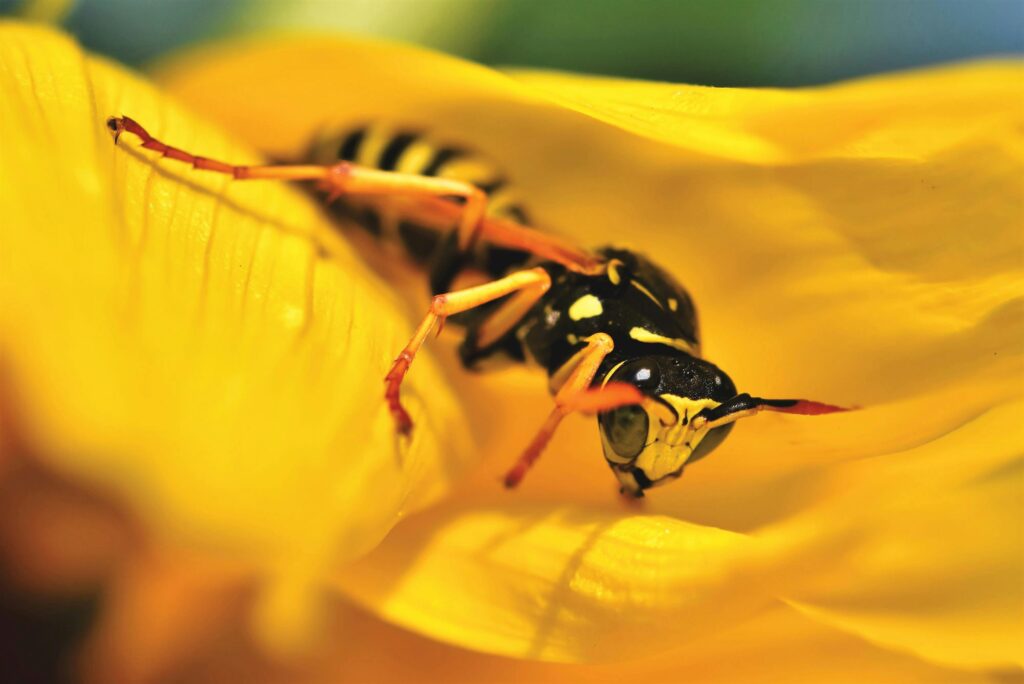Do Wasps make honey? When we think of honey, our minds immediately drift to images of honeybees labouring diligently, collecting nectar from flower to flower. However, the fascinating world of winged insects harbours more mysteries than we often realize, stirring curiosity about creatures like wasps and their relationship with honey. This article delves into the intriguing dynamics between wasps and honey, exploring whether these often misunderstood insects can produce the sweet substance we commonly associate with bees.
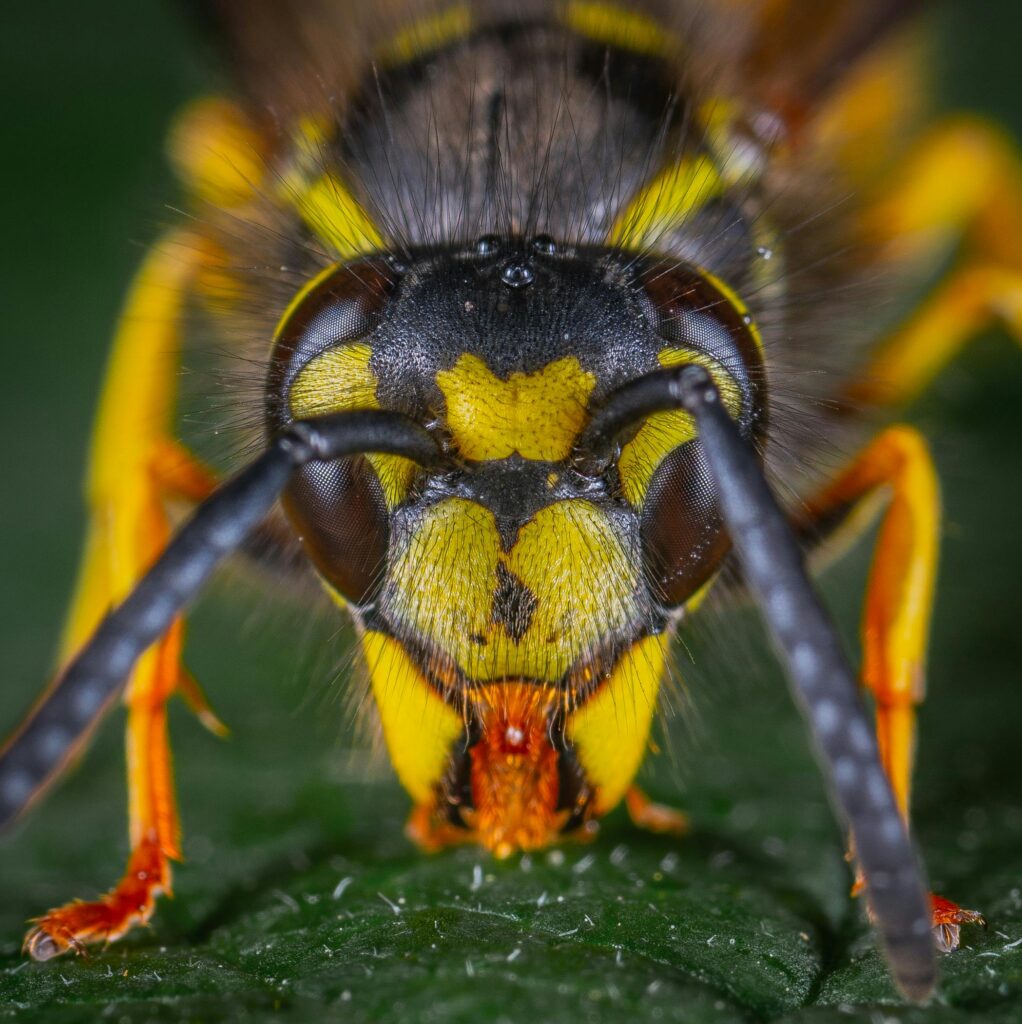
Wasp
Do Wasps Make Honey? Key Differences Between Bees and Wasps
Characteristics of Bees and Wasps
Bees and wasps, both members of the order Hymenoptera, share some similarities but also exhibit distinct characteristics that set them apart. Bees are generally hairy, round, and plump, with a distinctive buzzing sound that is often associated with their presence. Their bodies are adapted for collecting pollen, with specialized structures like pollen baskets on their legs. Honey bees, for instance, are known for their diligent work in gathering nectar and pollen to produce honey.
Wasps, on the other hand, are slender, smooth, and narrow-waisted, giving them a more streamlined appearance. Their flight is rapid and accompanied by a higher-pitched buzz compared to bees. Unlike bees, wasps are more aggressive and omnivorous, feeding on a variety of insects and sweet substances. This dietary flexibility allows them to play a crucial role in controlling pest populations. The Mexican honey wasp, for example, is one of the few wasp species that produce a honey-like substance, showcasing the diversity within wasp species.
Comparing Nest-building Behaviors of Bees and Wasps
While bees make honey and construct hives out of wax, a product secreted by worker bees, wasps build their nests in a markedly different manner. The nest begins as a single irregular layer of cells, which the queen wasp constructs using materials like wood fibers. Wasp species, including common wasps and paper wasps, use wood fibres mixed with their saliva to construct a paper-like material for their nests. This fundamental distinction in nest-building is not merely architectural but also reflects the varied life cycles and social structures between bees and wasps.
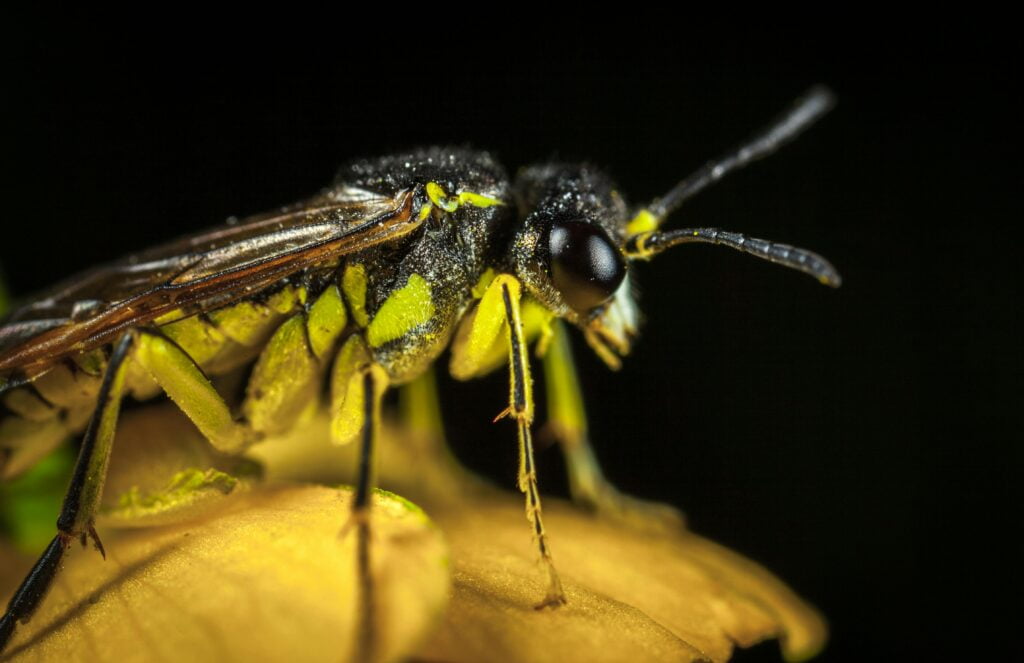
Distinguishing Diets: Wasps vs. Bees
Bees and wasps, although both are pollinators, exhibit significant differences in their dietary habits. Bees primarily feed on nectar and pollen, with honeybees converting nectar into honey to feed their young and survive the winter months. Wasps, on the other hand, maintain a more carnivorous diet. Adult wasps feed on insect prey like caterpillars, aphids, and beetle larvae. However, they also seek out sugary substances, which has implications for the question of whether wasps produce a honey-like substance. The honey contained material from various floral sources as well as honeydew, emphasizing its concentrated nature and long-term food storage capabilities within the nests.
Understanding the Role of Wasps and Bees in Pollination
Despite their fearsome reputation, wasps play an important role in ecosystems as pollinators. As wasps move from flower to flower in search of food, they inadvertently pollinate them, much like bees. However, bees, especially honeybees, are more efficiently designed for pollination, carrying pollen in special baskets on their legs. The ecological impact of both bees and wasps extends beyond pollination, highlighting their significance in maintaining biodiversity and ecological balance.
Life Cycle and Social Structure of Bees and Wasps
The life cycle and social structure of bees and wasps reveal fascinating differences. Bees, particularly honey bees (Apis mellifera), are eusocial insects, meaning they live in highly organized colonies with a single queen bee and a strict caste system. The queen bee’s primary role is to lay eggs, while worker bees take on various tasks such as foraging, caring for the young, and defending the colony. This division of labor ensures the smooth functioning of the hive, with each bee contributing to the colony’s survival.
Wasps, while also social insects, typically have smaller and less complex colonies. A single queen wasp establishes the colony by laying eggs, and the resulting female worker wasps perform tasks similar to those of worker bees. However, the social structure in wasp colonies is less rigid. Male wasps, or drones, usually die after mating, leaving the queen and workers to sustain the colony. The large colony epiponine wasp, for instance, demonstrates a more cooperative social structure, although it is still less intricate than that of honey bees.
Can Wasps Actually Produce Honey?
Exploring the Concept of “Honey” in Wasp Colonies
The notion of wasps making honey is a complex one, primarily because “honey” implies a specific type of substance produced by bees from the nectar of flowers. Understanding the nest biology of wasps provides insight into their behaviors and ecological roles, particularly in relation to their nesting habits and social dynamics. Wasps, unlike honeybees, don’t make honey in the traditional sense. However, some wasp species secrete a sugary substance to feed their young, which could be likened to a form of honey.

Wasp on leaf
The Reality of Wasps and Honey Production
It’s important to clarify that the typical products of wasp colonies do not include honey as we know it. The primary focus for wasps is the construction of their nests and the capture of prey to feed their young. While they do collect nectar, it is not converted into honey within their colonies. Instead, the nectar and other sugary substances serve as immediate nutrition for adult wasps.
Species of Wasps That Make a Honey-Like Substance
Among the diverse species of wasps, the Mexican Honey Wasp (Brachygastra mellifica) stands out for its ability to produce a sweet, honey-like substance. Indigenous to South America and regions around Austin, these wasps live in large, cooperative societies like bees and have the unique behaviour of producing this sugary material, which is an exception rather than the rule among wasp species.
Insight into the Diet and Nesting Habits of Wasps
What Do Wasps Eat? A Peek into Their Diet
Wasps have a varied diet that includes both protein and sugary substances. Predominantly, adult wasps feed on other insects like spiders, caterpillars, and aphids. However, they also consume nectar and honeydew, a sweet substance produced by aphids. This dual dietary preference enables them to control pest populations while also engaging in the pollination process.
An Overview of How and Where Wasps Build Their Nests
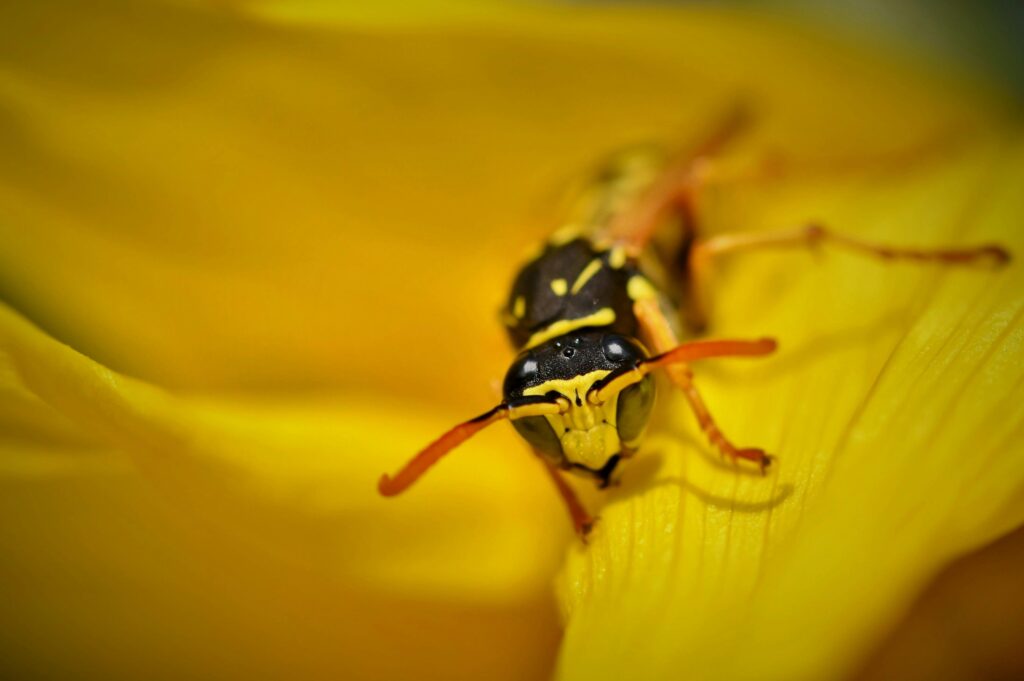
Wasp on Flower
Wasps are skilled architects, constructing their wasp nests in sheltered locations such as eaves, underground burrows, or in the branches of trees. The common wasp and paper wasp use chewed plant material to create a durable, paper-like nest where the queen lays eggs, and the colony raises its young. These nests can be quite large, reflecting the complex social structure of wasp communities.
How Wasps Survive the Winter Months
Most wasp species exhibit a fascinating lifecycle where only the mated queens survive through the winter. The queen’s survival is crucial for the entire nest, as she maintains control and signals the workers about threats, ensuring the colony’s continuity. They do so by finding shelter in crevices or other safe havens to emerge in the spring and begin a new colony. Unlike bees, wasps don’t rely on stored food sources like honey to get through winter, which further distinguishes their survival strategies and social behaviours.
Aggression and Defense Mechanisms in Wasps
Wasps are notorious for their aggressive behavior, especially when they feel threatened. Unlike bees, which are generally non-aggressive, wasps have a complex communication system involving pheromones, body language, and sound signals. When a wasp perceives danger, it releases a pheromone that alerts other wasps in the vicinity, triggering a coordinated defensive response. This can result in a swarm of wasps attacking the perceived threat.
One of the most formidable aspects of wasps is their ability to sting multiple times without harm to themselves, unlike bees that lose their stinger and die after a single sting. This makes wasps, such as the European hornet, particularly dangerous when provoked. Their stingers are not only painful but also effective tools for defending their nests and capturing prey. The aggressive nature of wasps and their efficient defense mechanisms underscore their role as both predators and protectors within their ecosystems.
By understanding these characteristics, life cycles, and defense strategies, we gain a deeper appreciation for the unique roles that bees and wasps play in our environment.
Discovering Wasps That Make Honey: A Closer Look at the Mexican Honey Wasp
The Unique Behaviors of the Mexican Honey Wasp
The Mexican Honey Wasp, known scientifically as Brachygastra mellifica, exhibits unique behaviours that set it apart from other wasp species. Notably, this species is one of the few that produces a honey-like substance, which it stores within its nest. These wasps live in large colonies with highly cooperative and social structures, functioning similarly to honey bee colonies despite being wasps.
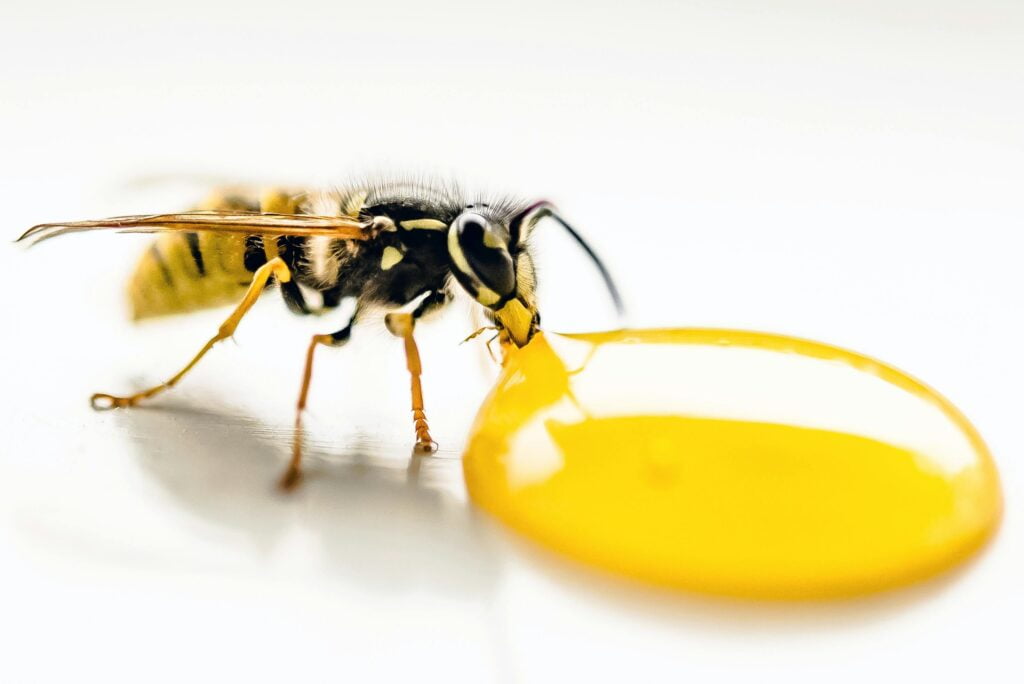
Wasp eating honey
How Mexican Honey Wasps Contribute to Their Ecosystems
Mexican honey wasps play a crucial role in their ecosystems. Their nesting habits in mesquite trees and the production of a honey-like substance contribute to the pollination of flowers and the control of insect populations. By maintaining a balance between vegetation and insect life, these wasps are valuable participants in their ecological communities.
The Role of the Queen in a Mexican Honey Wasp Colony
In the social hierarchy of a Mexican honey wasp colony, the queen occupies a central role. She is the primary egg-layer, with female workers assuming responsibilities for foraging, nurturing the young, and defending the nest. The queen’s ability to produce eggs that develop into a cooperative colony underscores the intricate social structures that parallel those seen in bee colonies, albeit within the unique context of wasp society.
Glossary and Further Exploration on Bees, Wasps, and Honey Production
Understanding the Terminology: Bees, Wasps, and Their Roles
In the study of entomology and ecology, terms such as “pollinator,” “nectar,” and “pollination” underscore the critical roles both bees and wasps play in ecosystems. Bees are famed for their honey production, whereas wasps, despite not producing honey in the traditional sense, contribute significantly to the pollination process and control pest populations through their predatory habits.
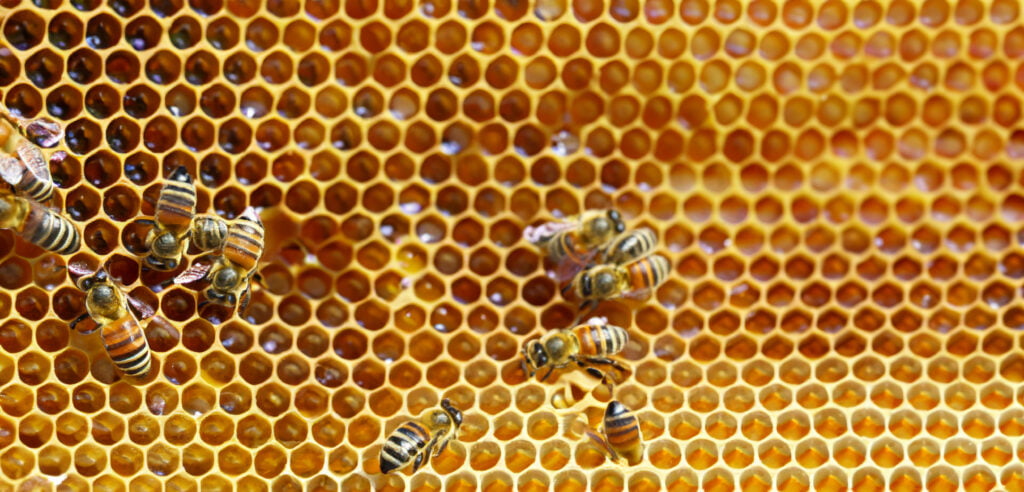
Bees
Related Posts: Studies and Research on Wasps and Honey Production
Recent studies and research delve into the fascinating dynamics between wasps, bees, and honey production. For example, the focus on species like the Mexican Honey Wasp provides insight into the exceptions to general beliefs about wasps and their capability to produce honey-like substances, encouraging a broader understanding of these complex insects.
Debunking Myths: The Truth About Wasps and Their Interaction with Humans
While wasps are often viewed unfavourably due to their sting and aggressive behaviour towards humans, myths surrounding their role and behaviour don’t always align with reality. Wasps, similar to bees, are essential to our ecosystems. Understanding the nuances of wasps’ behaviours and their contributions can promote a more informed and balanced perspective on these vital insects.

